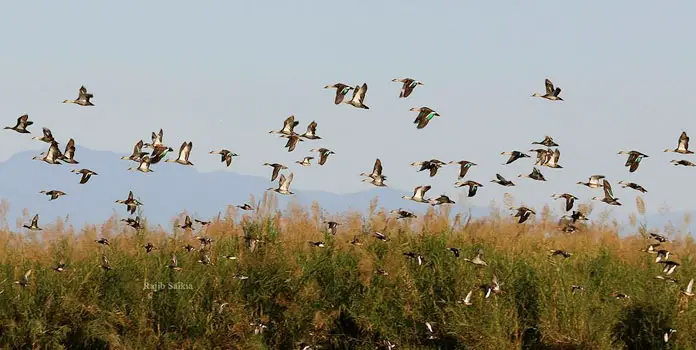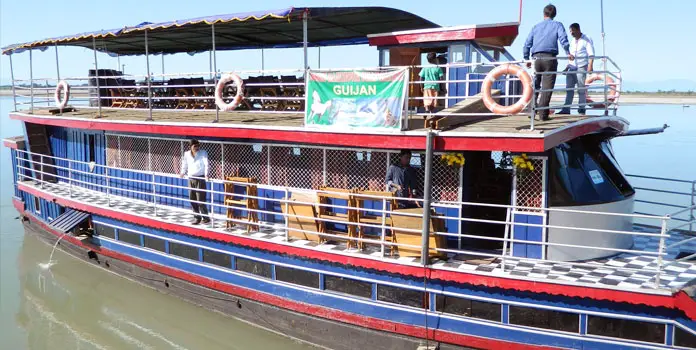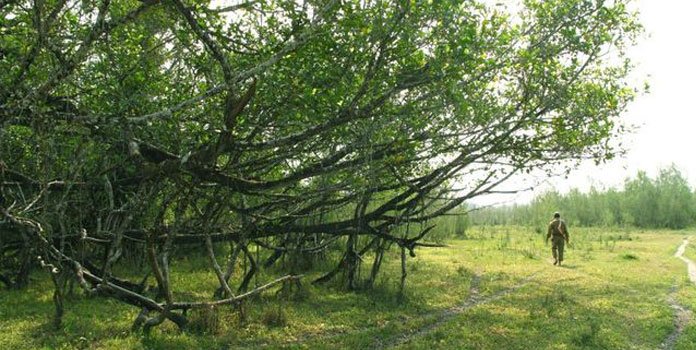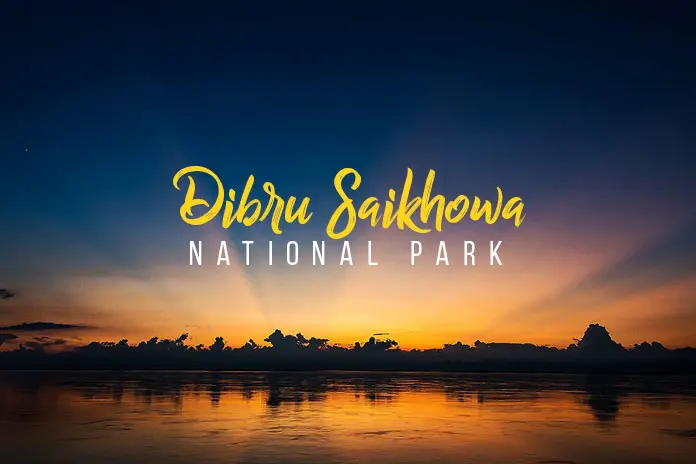If you are looking for a place that will be rich with natural beauty and flora, Dibru-Saikhowa National Park would be a great choice. Located near the town named Tinsukia in the Assam state, the park gets its beauty from the great Brahmaputra River. You can expect to see wildlife at its best as the park is roamed around by leopards, elephants, Malayan giant squirrel, monitor lizard, sloth bear, and tiger.
Besides those animals, the reason why so many visits to this place are the presence of many different kinds of beautiful birds. And not to mention the many camping opportunities and the gigantic tree.
How to reach Dibru-Saikhowa National Park
Dibru-Saikhowa National Park is located near Tinsukia town in Dibrugarh. The best way to reach the national park is through this town. You can reach Tinsukia by train or bus and later go to the national park from there.
The nearest airport is Dibrugarh Airport, which is at a distance of 83 km from the national park.
If you are in Guwahati, then you can reach Tinsukia by Bus or you can fly to Dibrugarh.
Best Time to Visit Dibru-Saikhowa National Park

October to March is the best time to visit Dibru-Saikhowa National Park. This is also the time when migratory birds can be seen. A total of 36 species of mammals and above 400 species of birds have so far been recorded from the Dibru-Saikhowa National Park.
Reasons to Visit Dibru-Saikhowa National Park
No matter where people visit, many different infrastructures get built to make the place a tourist spot and get money from visitors. However, when we are talking about Dibru-Saikhowa, you can be assured of the fact that you will not meet any hawkers or any infrastructure that will disturb your realization of the place “natural.” People present there are conservationists and greatly care about wildlife.
Here are some reasons why people love to visit this place as the destination for a lovely holiday:
A place for photographers
Bird photographers or photographers in general who love to take shots of nature may find their paradise in Dibru-Saikhowa National Park. Many peculiar birds have their habitat here, and some of the most visually pleasing species are grey heron, Asian openbill, whistling-duck, black stork, grey heron, white-winged wood duck, fish-eagle, hornbill, wood duck, etc. So, make sure that you pack your cameras and fix the aperture to take beautiful pictures of the blood staying there.
Houseboats

We visit many places, and almost all the time, we have to stay in the same kind of hotel. But when you are visiting Dibru-Saikhowa National Park, you will be able to wake up to the beauty of the river as there are floating hotels available for your stay. On these floating hotels, you will able to feel the motion of the wave as you sleep and wake up in one of these houseboats.
Tea garden
Assam is very famous for the tea garden, and you would not want to miss them when you visit Dibru-Saikhowa National Park. The park has a tea garden on one side, and the other side consists of the river. Visiting and walking through a tea garden is an enjoyable experience. The garden has some fantastic tea trails and the vanishing moon, crystal stars, glow worms, buzzing crickets, and frog croaks bring you closer to nature. The experience of walking through the garden is unforgettable and can be one of your best times there.
Gigantic tree
Near the Dibru-Saikhowa National Park, there is an island that is entirely occupied by an enormous tree. The tree has branches all over the place, and it is an excellent sight for visitors. The three is 120 years old and looks like an ancient mystery. It is an exceptional experience to camp under this tree and stays there all night. It can also be a place for photographers who are willing to capture some wonders of Mother Nature.
Motorboat
The diesel-run motorboats there is the perfect transportation to use for going deep in nature and experience it closely. It can be classified as a safari ride with a motorboat. Roaming around the river at night on a motorboat cruise is one of the unique experiences you will have during your stay in Dibru-Saikhowa National Park. The boat stops at places, and while riding the boat, you can expect to see some river dolphins beside the beautiful birds flying above your head.
Picnic

People who love to sit beside a bonfire at night, playing guitar and gossip about life, and sleeping inside a tent can find their picnic location around the Dibru-Saikhowa National Park. The islands are a great place and people living near the bank of the river are friendly towards tourists. You can also plan a picnic and take your food while riding on one of the motorboats. It is the perfect place for nature lovers, campers and adventurers who are looking for a cozy and suitable place for their next holiday.
Food
A variety of saag and vegetables are found in the local area. The food is not very different, but the people in this area cook them differently, and they taste very delicious. Elephant apple soured yellow dal, and the desi chicken is some of the must-try foods.
Price
One of the reasons why you will find Dibru-Saikhowa National Park as a great place is the low prices of accommodation and transportation. The reason for this is the place has not yet been commercialized, and the local prices are very low. With only Rs.2000, you can hire a houseboat where you can not only stay but also eat, and travel within the price. You get meals, accommodation, and transportation all in one.
So, what are you waiting for? Even though the place is not very famous, it is an excellent option for travelers and nature lovers. If you are amongst them, take a short flight and enjoy a few days off from all the city’s pollution and become closer to nature.
Quick Facts
Total Area: 340 sq. km
A total of 36 species of mammals and above 400 species of birds have so far been recorded from the Dibru-Saikhowa National Park.
Fauna: 36 species of mammals have so far been recorded – Tiger, Elephant, Leopard, Jungle Cat, Bears, Small Indian Civet, Squirrels, Gangetic Dolphin, Slow Loris, Assamese Macaque, Rhesus Macaque, Capped Langur, Hoolock Gibbon, Wild Pigs, Sambar, Barking Deer, Water Buffalo, Feral Horses etc.
Avifauna: It is an identified Important Bird Area (IBA) having more than 382 species of birds, some of which are Greater Adjutant Stork, Lesser Adjutant Stork, Greater Crested Grebe. Large Cormorant, Openbill Stork, Black-necked Stork, Large Whistling Teal. Grey leg Goose, Grey-headed Fishing Eagle, Griffon Vulture, Osprey, Crested Serpent Eagle, Spot Billed Pelican, White Winged Wood Duck, Baer’s Pochard, Greater Spotted Eagle, Pale Capped Pigeon, Great Pied Hornbill, Marsh Babbler, Jerdon’s Babbler, Black Breasted Parrotbill, etc. The Park is renowned for the natural regeneration of Salix trees.

